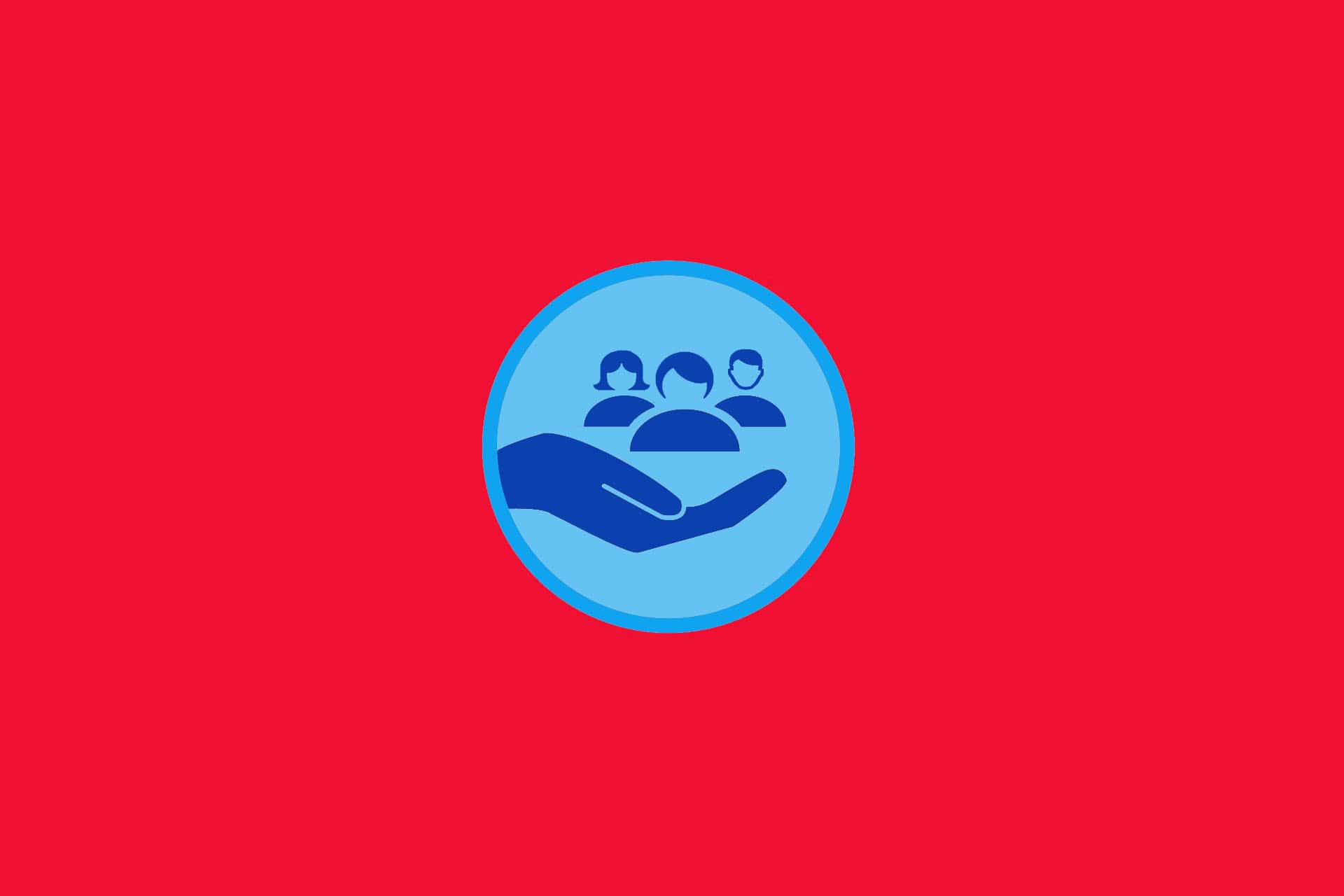The human being in digitalisation
Our world is digital. We use search engines to find the way to an address or a specific product, we prefer to shop online and our communication takes place largely via digital platforms. This leads to our behaviour being observed and analysed by companies. In the best case, to adapt services and products to our requirements. Most of the time this is about numbers, and every now and then I have the feeling that people are increasingly perceived as data sets. But from my point of view it is important not to understand people as abstract numbers, because in the end what companies produce, communicate and sell is about individuals, living people with emotions, preferences and aversions.
Very many companies are dealing with the topic of digital transformation and digitalisation (two different topics, but strongly connected). They try to make products and customer relations better, faster and also more automated. In parallel, we as a society are increasingly discussing how we can change our world for the better. People are becoming more (self-)conscious and have higher demands on services, products and their providers.
The human being customer
Customers want to be perceived, appreciated and respected as people and individuals. They want a shopping experience, they want personal service. They want a seamless customer experience both online and offline. They expect authenticity and lived values from suppliers. They don’t want to see models optimised with Photoshop. They are looking for sustainable fashion that has been produced fairly.
Companies react to this by adapting their marketing to these requirements. Digitalisation makes marketing intelligent, that is why it is also called marketing intelligence. Through data and the “tracking” of customers, in the good sense of the word. But change is not only taking place in the direction of the customers. Some things also change within the company. Employees are becoming more and more self-confident and, like customers, demand that they are perceived as human beings with appreciation, empathy and trust.
The human being employee
To act hierarchically – i.e. top-down – as a leader like Charles Dickens’ novel character Mr. Ebenezer Scrooge has long been outdated. Nowadays it is becoming increasingly important to develop an understanding of the fact that people are the factor for success. Classical hierarchies no longer work because employees, like customers, are more self-confident and have more demands.
They want to communicate with management at eye level, they want to be valued. They want to be trusted, they want to be able to evolve and to contribute their own ideas. In addition, a corporate culture in which open and transparent communication, appreciation and respect are lived out is necessary to find experts or new employees.
Human beings MUST make mistakes
Fortunately, the work in companies today is still mainly done by people. How things will be in the future is another matter. It is in the nature of man to make mistakes. As Martin Luther said “Where wood is chopped, splinters must fall.”.
For me, a good error culture is very important. Mistakes are by no means reprehensible, because man can learn from them. It is elementary to deal with mistakes, to analyse them and understand them as a source of information. In this way, organisations (and thus people) gain a deeper insight into the way individuals think. It is important to find out what the logic behind an error is and what the approach of the person who caused the error is. And since no one is truly unique, and people often think in similar ways, it is helpful to use this experience.
People need trust
“Nothing can strengthen a person more than the trust you put in them.” – Adolf von Harnack (1851 – 1930)
Today, there is often talk – for example in the context of the home office – of trust work. I know a former CEO who was convinced that employees mow lawns in the home office or watch TV on the sofa. However, in my opinion, trust work involves more than just a CEO who does not suspect employees. It is, for example, about trusting your colleagues and supporting each other. If someone has difficulties with a task, one should be able to trust blindly in the support of the members of the team. Even if it only consists of others listening and perhaps already helping to find the solution by saying the problem out loud.
Management should show trust in employees and teams by letting them work and decide autonomously. Trust gives people self-confidence and that motivates them to go the – as they say – extra mile. And that leads to better results for the customer. Or as I like to say: “Happy Team <-> Happy Customer”.
The mixture does it
Our world is global. People come together. A diversity of cultures, characters, backgrounds and experiences is a good thing, because diversity enriches a society and also a company, which is basically a small society.
It is especially important to get diverse input on topics such as business innovation and digital transformation. As already written, people are individuals and everyone has their own point of view, experiences and perceptions. The more people are involved in an innovation, the more creativity arises, the more detailed the vision/idea becomes, the better the product becomes and the happier the customer becomes.
Diversity is very helpful. Both for companies, the corporate culture and customer success. It is proven that companies that adapt and live diversity are more successful and more resistant to changes in the market. They become more agile through this diversity.
Flexibility
Due to the constant change of consumers, the market is changing at the same rapid pace. Especially for long-established companies, it is vital for survival to constantly adapt to new requirements and display a high degree of flexibility.
Nowadays flexibility is called agility (old characteristic in a new guise). And it is an important characteristic to develop a resilience towards other companies and start-ups. Especially start-ups develop products that either offer existing products in a better and more modern version or even develop new products that drive existing products off the market. Examples are Kodak and the development of the digital camera or video libraries and the streaming offer of Netflix.
In order to act and react agilely, you need not only agility but also courage, creativity, curiosity and, as it is so nicely called a doer mentality. And, of course, not to be forgotten, companies must think customer-centred and actively involve the customer in product development. Customers know best what they need and therefore continuous communication and active listening prevents products from being developed without the customer in mind. It needs
- courage to break new ground, even if the result is not clear and one does not know whether it will really succeed.
- creativity, so that new and possibly unorthodox ideas can be used for innovative products.
- curiosity about the market, the developments of other companies and the world in general, in order to draw conclusions and react.
- concrete action instead of endless planning, where every detail, however small, is discussed and set as a goal. This takes too long and it happens quickly that a market has already changed before organisations have finished planning.
And that brings us back to the issue of agility.
Transforming into digital
The above is a list of some ingredients for the “recipe” of a digital transformation. By the way, a digital transformation is not a digitalisation. Digitisation is a subset of a digital transformation and covers the IT landscape.
The basis for a successful transformation is a healthy corporate culture. A much-read statement on the web is as follows: “Culture eats strategy for breakfast”. Without a good corporate culture, no successful transformation can take place.
In such a project it is essential that management informs all employees from the beginning and that they are actively involved, because every employee is important for the success of a transformation. Regular communication creates general knowledge and transparency. Ideally, all teams help, find new ideas and make decisions independently. The management’s task is to act as a coach and to support in case problems arise.
In a process of transformation, fears, anger and insecurity arise in people. The management should take these emotions seriously, listen actively and get into the skin of these employees in order to understand the feelings of those involved and to be able to help in a concrete way if necessary.
To sum up, it can be said that although the world and our society are changing drastically, people are still the focus of attention. I even dare to say that, despite all digitalisation and automation, the human being will always play a very important role. It goes without saying that at some point professions will become completely digitalised. It is the task and duty of our society to provide the people concerned with a meaningful and, above all, satisfying task. No matter what this task will look like then. It is certainly a good idea to start collecting ideas right away.
Notes:
Rob van Linda has published another post on the t2informatik Blog:

Rob van Linda
Rob van Linda started working with customers in his parents’ company when he was a young man. After the Hotel Management School in Maastricht (NL) he worked as an Event Manager in various countries. In Germany he changed his domain and has since then been active in the IT sector as a link between clients and the team. He is an expert in digitalisation with a focus on people. Rob van Linda works as Chief Digital Officer, Digital Transformation Manager, Leadership Coach, Digital Business Innovator and Marketing Intelligence Manager.
